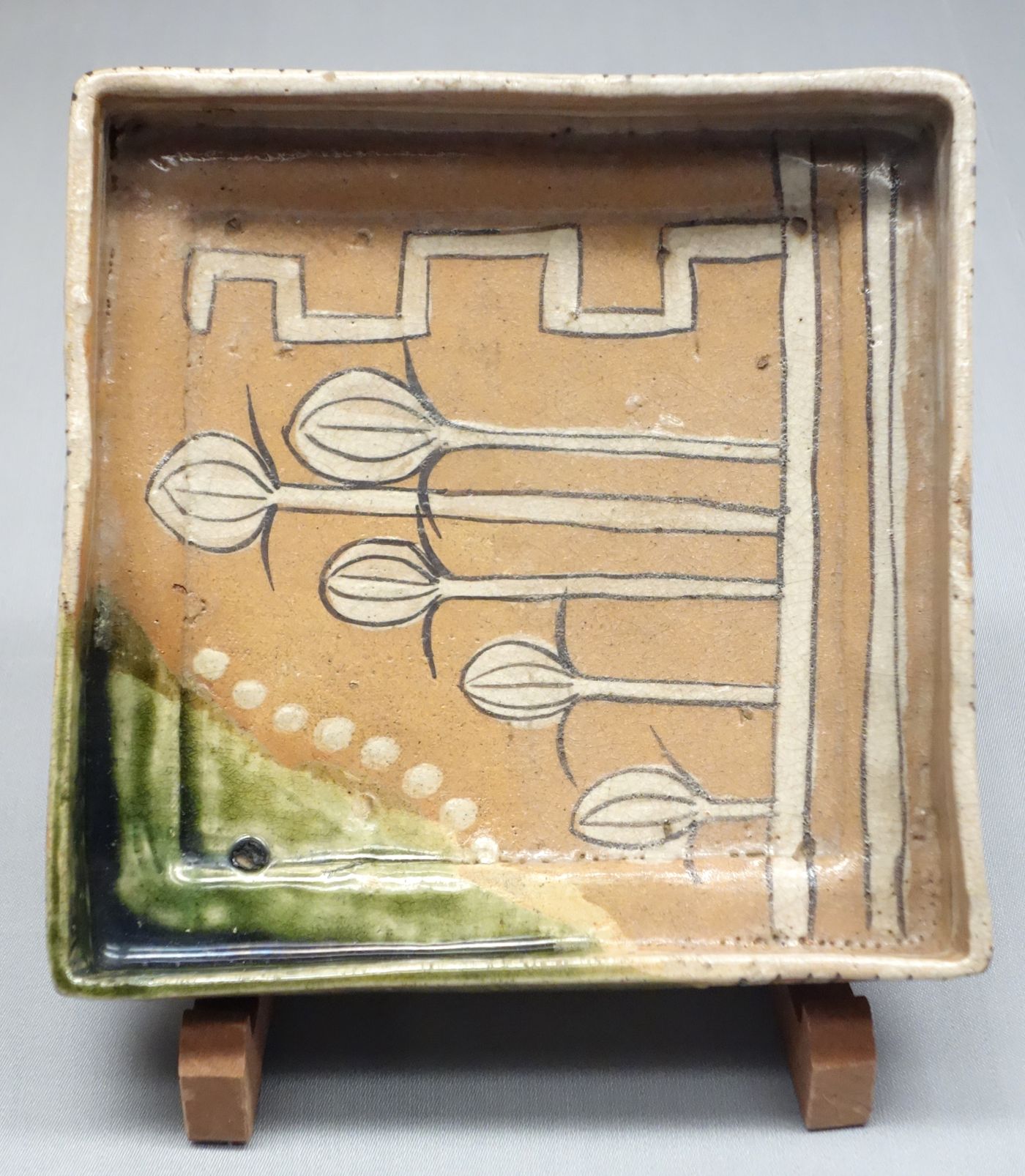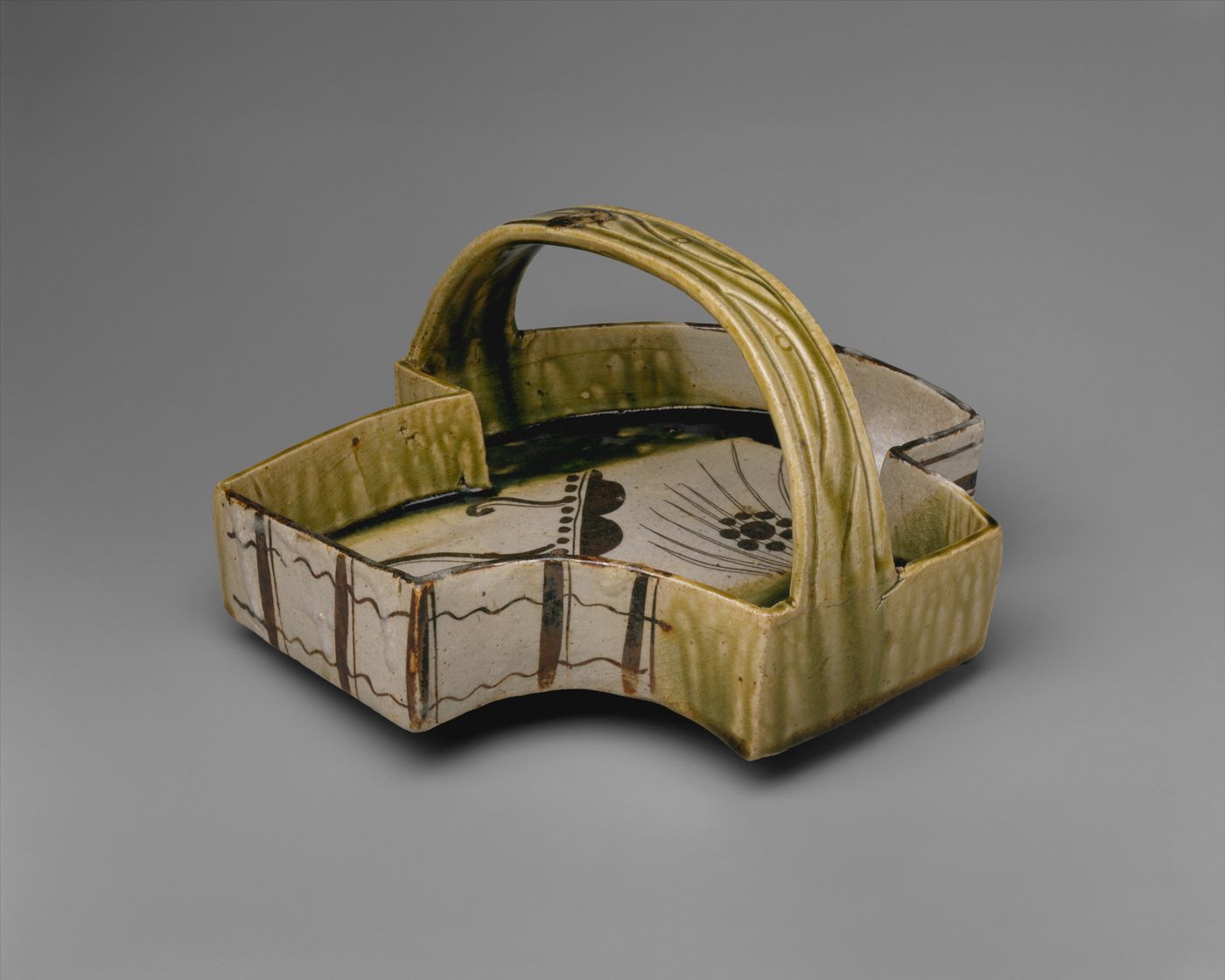Lively Oribe-yaki Pottery

Mino and Seto are geographically separated by only a mountain road. The ancient "Mino-yaki" has been misunderstood as being made by "Seto", one of the six ancient kilns in Japan. It was not until the archaeological discovery in 1930 that it was confirmed that a large number of "Seto-yaki" were actually "Mino-yaki", and "Mino-yaki" was therefore renamed. And "Oribe-yaki" four kinds of pottery. "Seto Black" is almost all black tea bowls, "Yellow Seto" is mainly tableware and other small items, "Shinoyaki" is mainly tea set and kaiseki tableware, and "Oribe" which appeared later, covers all utensils . In the excavations of the archaeological site, the "Oribe ware" is also the most abundant, which can prove its popularity.
Especially when I first learned the tea ceremony, I saw a tea bowl with half green glaze. The asymmetrical shape and abstract patterns made me fall in love with it. That was my first contact with Oribe ware. For this reason, the gourmet and artist Kitaoji Roshan people highly respect this type of pottery, calling it "pure Japanese style" and "a unique type of pottery in the world". And the person related to this pottery is the famous Warring States period name Furuta Oribe who was born in Mino.

Military commander artist Furuta Oribe
Speaking of Furuta Oribe, he is not well known outside of Japan. Indeed, in terms of military exploits, he is mediocre. Although he was a veteran of the three dynasties, he served Oda Nobunaga, Toyotomi Hideyoshi, and Tokugawa Ieyasu, but his salary was only 35,000 shi (the daimyo who participated in the battle of three people in the world, usually at least 100,000 to 200,000 stone). What really made him famous in Japan is his breakthrough in tea ceremony and various arts, especially pottery, making him a legend in the tea ceremony world after Sen Rikyu. And "Oribe-yaki", named after his official position "Oribe Masaru", also made him a well-known figure in the Japanese ceramics industry.
"Oribe-yaki" is a kind of pottery that is easy to identify. It is characterized by a variety of shapes and is different from traditional ceramics, which require "perfect curvature". "Oribe-yaki" is mostly asymmetrical in shape, deliberately twisted but not completely Pretentious; its colors are various, including green, black, brown, and red, among which the patina glaze can be said to be the signature colour of Oribu, coupled with geometric lines and abstract patterns, the bold and unrestrained composition and shape liberate the extremely thrifty in the era of Sen Rikyu. The style of the utensils, the mysterious wabi-sabi is no longer the only criterion for beauty, and the things that make people suddenly open and laugh are also a kind of beauty.
Whether this unique style was created by Furuta Oribe is still in doubt. Kitaoji Lushan people have pointed out that these pottery existed before Furuta Oribe, but they were not named at the time. The current historical archives also do not show any direct connection between Furuta Oribe and the innovative techniques used in "Oribe ware". Having said that, the fact is that when Furuta Oribe succeeded Sen Rikyu as "the number one tea master in the world", the "Oribe-yaki" produced in Mino became a fashion in the tea ceremony world. Therefore, many scholars have deduced that Oribe Furuta was the chief designer and promoter who directed Mino kiln workers to create "Oribe-yaki".
"True Cursor" of Japanese Artifacts
Furuta Oribe inherited the "unconventional" spirit of his teacher Sen Rikyu, so he did not imitate the teacher's "silent" style, but developed a unique way to develop the gorgeous style of the late Momoyama and early Edo period in the 16th century. Oribe not only took a different path from his teacher in the tea ceremony, but the creations under his guidance made Japanese food utensils stand out, appearing all kinds of interesting and strange shapes.
The utensils of traditional Japanese cuisine can be divided into three grades. "True" can be understood as the most solemn and noble grade. The utensils are usually round, square and other upright shapes. The "Tangwu" from China and the ceramics from North Korea are the "true" level. "Xing" objects are a little more relaxed than "true" objects, such as oval, triangular, fan-shaped, etc., adding a little change to the dignified. "Grass" utensils are free and changeable, such as scoop-shaped, bucket-shaped, and hand-made bowls.
In the early days of Japan, Tang and Korean artifacts were very popular, and "true" artifacts must be used to entertain noble people. Even though Sen Rikyu drastically reformed the tea ceremony and chose the "Japanese things" of "walking", most of the tea utensils and utensils used are upright and simple in color. The "Raku Chawan" created under his supervision, although the edges are not completely symmetrical, they are not distorted too exaggeratedly.

Pottery has "design" since Oribe ware
After Sen Rikyu's death, it was time for Furuta Oribe to "make a siege". Before the advent of Oribe-yaki, Japanese pottery had almost no designs or patterns. Of course, there are some patterns that are naturally produced during the firing process, such as the famous Yaobian Tianmu tea bowl, but these patterns are formed by accident, not "designed"; Just some simple underglaze patterns.
It is Furuta Oribe who really makes the pattern "live". His creativity exploded, and he was no longer subject to the "wabi-sabi" style of his predecessors. Coupled with the latest Korean firing kiln technology passed down from Dangjin to Mino, the temperature could be controlled more accurately, and the firing of complex patterns, glaze colors or shapes could not be achieved. No matter how difficult it was, the bright and lively "Narukai Oribe" was born. The patterns of Oribu pottery are full of childlike interest, giving people a feeling of unrestrainedness. They are both naturalistic and abstract. They are very joyful. Therefore, some people speculated that these patterns were created by Oribu based on children's graffiti.
What Furuta Oribe has been pushing for is not the "real" weapon, but the beauty of "action" or even "grass", that is, to find its beauty in imperfection, and to find interest in asymmetry. Among them, the black Oribe tea bowl, which is shaped like a shoe in the Heian period, is the leader of the "Oribe ware". Rare among modern Chinese and Korean ceramics.

Deliberate but not contrived twisted style
That's why Japanese pottery artist Tokuro Kato once said, "Sen Rikyu appreciates the beauty of nature but doesn't create it. Oribe is the one who creates beauty. Tea utensils become works of art from Oribu." In fact, it is not just tea utensils ,
It can be said that the food vessel became a work of art, and it can be said that it began in Oribe. Oribu's design gives a strong and powerful performance without losing the original simplicity, and more importantly, it is deliberate and not artificial. Nowadays, many potters imitate the "Oribe ware", although the technology is more advanced, and firing is not only the patent of Mino kiln, but the works produced are very awkward and not many are pleasing to the eye.
To appreciate the gorgeous and simple "Oribe-yaki" of the Momoyama period, you probably have to go to several museums in Japan after customs clearance. Among them, the "Furtian Oribe Art Museum" located in Kitayama-dori, Kyoto, is a very miniature museum, with only about 20 or 30 exhibits at a time, but each one is a masterpiece. As for the "Oribe-yaki" made by the Roshan people of Kitaoji, if you are lucky, you can still find them in antique shops. If you want to pick up a few "Oribe" dishes to enjoy at home, there are many potters in Gifu today, and if you look carefully, you can still find your favorite.
The original article was published in the October 2020 issue of Hong Kong Economic Journal.
Most of the references and images are from the exhibition catalogue of Turning Point: Oribe and the Arts of Sixteenth-Century Japan, a large-scale Oribe exhibition at The Metropolitan Museum of Art in New York in 2003.
Subscribe to Sponsorship: https://liker.land/learnedfriend/civic
Like my work? Don't forget to support and clap, let me know that you are with me on the road of creation. Keep this enthusiasm together!

- Author
- More